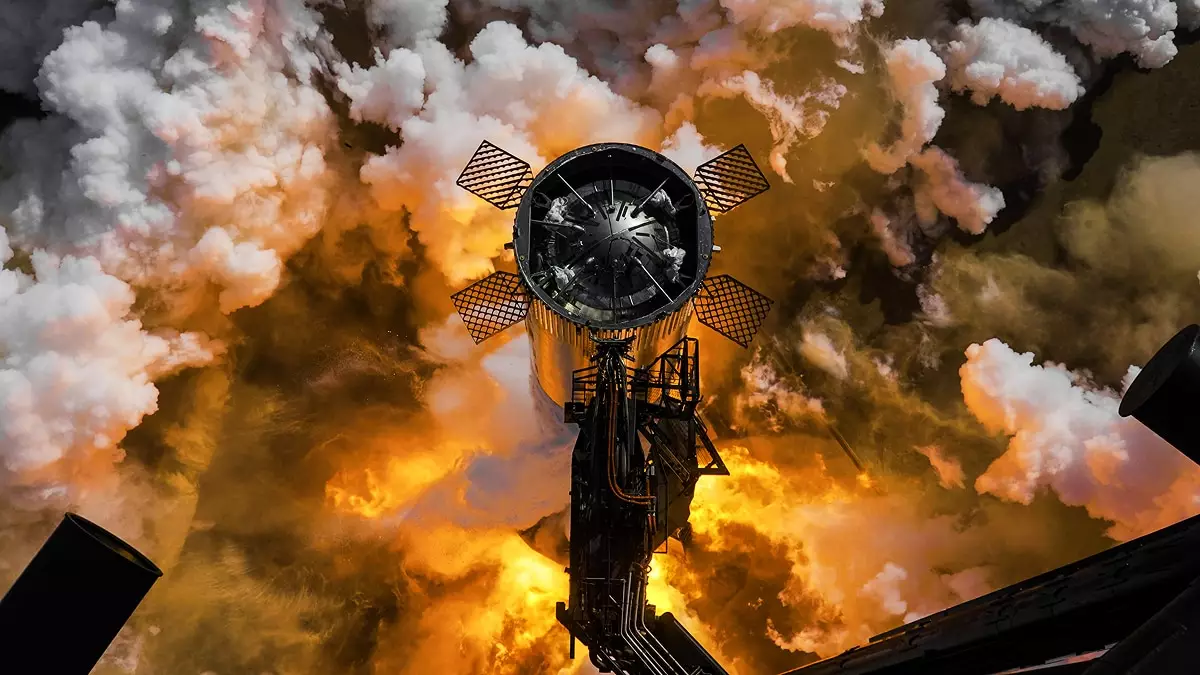In the ever-evolving landscape of space exploration, SpaceX has further cemented its position with rigorous preparations for its Starship launch system. Recently, the company conducted static fire tests for both the Super Heavy booster and the second stage of the Starship at their Starbase facility in Texas. These tests are crucial for simulating launch conditions and ensuring the vehicle’s systems are operational before the upcoming test flight.
The Super Heavy booster underwent a remarkable full-duration static fire, involving all 33 Raptor engines. This extensive test aimed to mirror the actual launch experience, providing valuable data on how the engines perform under maximum load. Following this, the second stage of Starship engaged in its own testing, focusing on various thrust conditions to better mirror real flight scenarios. This layered testing approach is indicative of SpaceX’s commitment to robust engineering protocols and the need for thorough validation of the rocket’s capabilities.
As preparations continue, the next important milestone is the upcoming integrated flight test, dubbed IFT-8, tentatively scheduled for the end of February. However, one must note the critical role of the Federal Aviation Administration (FAA) in providing the necessary approvals. This regulatory oversight adds another layer of complexity to the process, as SpaceX awaits final clearance before proceeding with the launch.
SpaceX’s strategy includes conducting multiple Starship missions throughout the year, emphasizing the importance of reuse in rocket technology. Following their last test flight, IFT-7, which took place in January 2025, the company’s ambitions remain lofty. The successful recovery of the Super Heavy booster utilizing robotic arms from the launch tower is a testament to the innovative engineering at SpaceX. Yet, challenges remain—as communication with the second stage was lost during flight, leading to speculation about a potential in-flight breakup, as evidenced by debris reports over the Caribbean.
In light of these challenges, SpaceX engineers are focusing on implementing design and operational enhancements to improve flight stability and ensure a controlled descent for both stages of the rocket. This proactive approach is essential for mitigating risks in future missions, particularly as the Starship system gears up for more demanding tasks.
Starship’s versatility is underscored by its intended use in significant programs such as NASA’s Artemis program, which plans to return humans to the lunar surface. The Starship lander is currently slated for Artemis 3, scheduled for 2027. However, before its deployment for human spaceflight and commercial endeavors, SpaceX will need to conduct additional test flights to validate the vehicle’s performance and safety protocols.
As SpaceX continues to enhance the Starship system, it remains at the frontier of aerospace innovation, balancing regulatory constraints with the pursuit of groundbreaking advancements in space travel. The successful completion of upcoming tests will be pivotal in ensuring the spacecraft is ready for its ambitious future missions, reflecting the company’s unyielding commitment to redefine human access to space.


Leave a Reply